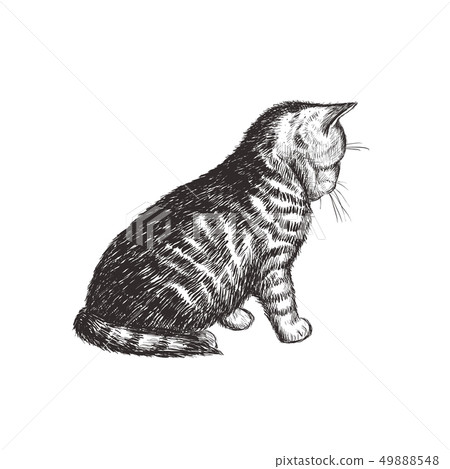
#Cat sketch professional
As his success went from strength to strength, he continued to struggle with anxiety and depression, and despite his professional accomplishments, his personal life was never quite the same again. The effects of this tragedy had a huge impact on Wain, and he became increasingly more inward-looking. It set Wain on the road to artistic and commercial greatness, but, sadly, he was unable to enjoy this accomplishment as – a few months later – Emily passed away. His work, ‘ A Kitten’s Christmas Party’ was hugely popular and a great success. There must have been even more reason for joy when a few months later Wain was commissioned again by The Illustrated London News to draw more illustrations based on their cat. She must have been delighted when, in the Autumn of 1886, she saw their cat depicted in Kari’s book. Over the course of her prolonged illness, the illustrator sketched their cat as a way to keep her spirits up.

Not long after the couple wed, Emily became unwell. Yet even in these early examples, we can see signs of his ability to give a cat a personality and a playful nature.ĭespite the happiness seen throughout his work, the tale of Wain’s interest in cats is sadly a tragic one. Written by Caroline Hughes (under the pen-name Kari), his illustrations seem a lot more traditional and sober when compared to his later work. Two years after this, he got his first real taste of success when he was commissioned to illustrate a children’s book for Macmillan called Madame Tabby's Establishment (pictured above). It wasn’t until 1884, when Wain was twenty-four, that he sold his first drawing of a cat to The Illustrated London News. In his early years, he specialised in drawing animals and country scenes, and he had work published in several journals, including the popular Illustrated Sporting and Dramatic News. Early on in his career, he had felt that nobody would take him seriously if he just drew pictures of cats, and so his initial ambition was to be a press artist. Surprisingly, Wain never started out wanting to be a cat illustrator. While this is certainly a fascinating aspect of his work, it is only one part of a greater story we should be careful not to allow it to overshadow the fascinating work he created during his lifetime. While never officially diagnosed with schizophrenia, many people believe that he suffered from this condition, and some have argued that his later drawings demonstrate his psychotic deterioration. Today, his work continues to attract interest, but his legacy is based more on his struggles with mental health than the work that he created. “He invented a cat style, a cat society, a whole cat world.” His illustrations were so popular that throughout the beginning of the twentieth century, most homes had at least one of his famous cat annuals and many nurseries had Wain posters hanging on their walls.

Before Wain, cats in England were often thought of with contempt, but his work humanised them and helped to show them as something to be liked, admired and even loved. Born in 1860, his anthropomorphic portrayals of cats captured the imagination of the Edwardian era, and his work helped to elevate the profile and popularity of our feline friends to unprecedented heights. Louis Wain was one of the most popular commercial illustrators in the history of England. Then All The Cats Joined And Sung The Chorus To Madame’s Satisfaction (1886) © Louis Wain/Chris Beetles Gallery London Source: Time Out London


 0 kommentar(er)
0 kommentar(er)
